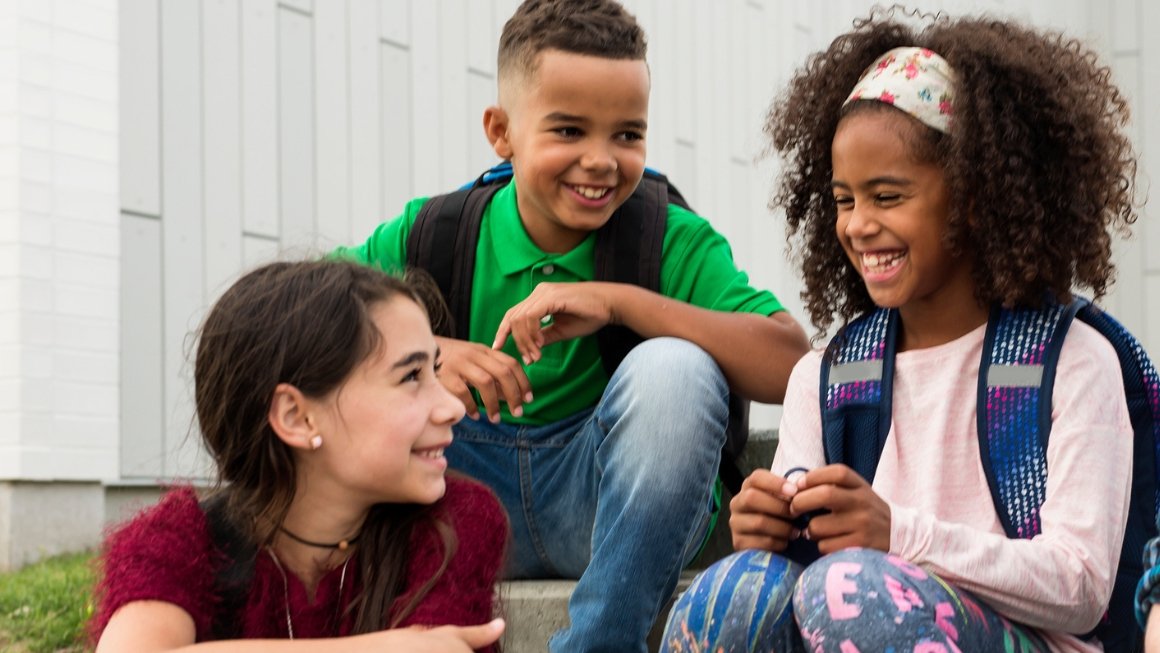
Four Schools Are ‘Remaking Middle School’ One Step at a Time
While remaking middle school may sound like a gargantuan task, four schools working closely with the UVA team that launched the initiative found success one accomplishment at a time.
Four years into the Remaking Middle School initiative, University of Virginia researchers understand how enormous the task of transforming middle school education can sound to administrators and teachers.
“When we initially start working with schools, there is definitely that feeling of being overwhelmed,” said Faith Zabek, postdoctoral research associate at Youth-Nex, the UVA School of Education and Human Development research center. “But it is the small wins that combine to make real change.”
Zabek and Ashlee Sjogren, assistant research professor, are lead researchers on a team from Youth-Nex’s Remaking Middle School Design Lab, a year-long experience with schools where the Remaking Middle School initiative is put into action.
During the 2021-22 school year, Zabek and Sjogren spent hours each month with leaders from participating schools in workshops and coaching sessions, working to deepen practitioners’ knowledge of adolescent development. Through an equity-centered framework called liberatory design, the teams walked through challenges aimed at shifting educators’ perspectives and creating positive experiences for students.
This month, the team published a new report on the design lab featuring four key facets of the experience, all of which point to the power of accumulating small successes. Through case studies featuring four schools, each given pseudonyms, the report is designed to serve as a guide for educators interested in remaking their own middle schools.
“The case studies show how the process looked a little different at each school,” said Sjogren, who is an assistant research professor with Youth-Nex. “And we end with questions that a future team might consider as they start to engage in this type of work, without providing a cookie-cutter approach.”
Woodside Middle School: Teams Matter
In recent years, the “magic” that was once Woodside Middle School had been lost. The work Woodside did with the Design Lab resulted in positive changes to their school culture. And the report credits the democratic nature of their team to much of this success.
Combating a high degree of teacher and leadership turnover, Woodside found success in ensuring a school administrator was on the design lab team, as well as teachers who held diverse positions and had a capacity to participate. The team worked to create a sense of community and was clear about roles and responsibilities.
Woodside team members were inspired by the process and each other. And that was seen across schools.
“What we heard from educators we’re working with is that the RMS design model really reignited their passion for teaching and their passion for students,” Zabek said.
Lakewood Middle School: Key Practices
Lakewood Middle School’s efforts to engage in successful redesign work revealed a need for five key practices of the RMS design lab: Teaming, learning and coaching meetings, knowledge building, empathy work, and educator honorariums. The team at Lakewood experienced a bit of tension at the beginning of the process, which was not unusual.
“The tension at the beginning of the design process often comes because educators are overworked and feel that they don't have the capacity to engage in a design process that seems a little bit unclear,” Zabek said.
The Lakewood case study illustrates how their process leveraged each of the key practices to support the team’s work, including tangible expressions of value such as an honorarium. The team at Lakewood, in partnership with the Youth-Nex team, persisted and ultimately helped create successful changes at their school.
“These positive changes started with small, immediate steps that the Lakewood design team took to address the needs of students,” the report says.
Pacific Grove Middle School: Navigating Challenges
With the Pacific Grove Middle School case study, the Remaking Middle School team dives a bit deeper into the topic of navigating challenges. Pacific Grove illustrates a series of likely challenges for schools embarking on a redesign effort, including time and scheduling, school-wide buy-in, and finding the appropriate balance for students’ voices and agency.
Wrestling with those challenges can ultimately result in positive outcomes, including engaging well with students.
“It's so fun to hear the students talk about how they feel respected,” Sjogren said. “They feel like valued members of their community because their administrators are willing to ask for their perspectives or, in class, their teacher is willing to like give them options.”
Summit Middle School: Sustainability
The cumulative impact of small successes can be greatest when the remaking efforts are sustained over several years. The Summit Middle School case study illustrates how beginning a school redesign effort with a clear vision for sustainability is important.
Data from Summit Middle School revealed that a disproportionately high number of 8th grade boys were being disciplined for their behavior, triggering a “ah ha!” moment for the design team. They realized that since they knew there is nothing inherently wrong with 8th grade boys, there must be something about their existing school structures that wasn’t working.
That realization resulted in a series of initiatives encouraging students to voice their ideas and concerns that created a snowball effect of small changes accumulating over time including dress codes, updated recess equipment and discipline policies.
The full report summarizes the positive impact of the RMS Design Lab on participating schools and educators, with more than 94% of the participating educators reporting they plan to use the information from the lab in their future practice. And that is when those successes really begin to accumulate.
"Small, incremental changes are so important,” Sjogren said. “And the Remaking Middle School Design Lab model is set to build on each of those changes, year after year. That’s where I feel like we’re starting to see the compound impact of all those little initiatives over time.”
RMS Design Lab
Learn more about that the Remaking Middle School Design Lab.
News Information
Media Contact
Audrey Breen
